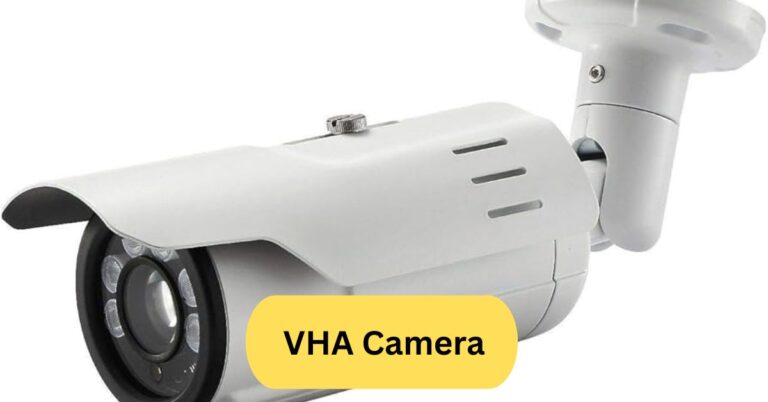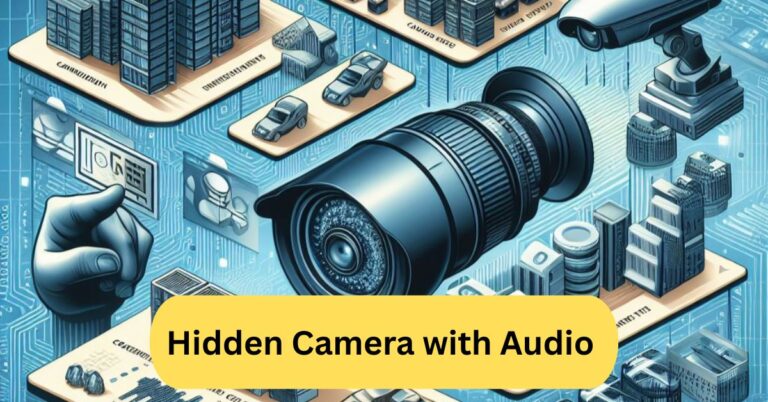
I once used a flagship camera phone on a trip, and it amazed me how crisp and vibrant the photos turned out—even at night. It felt like carrying a professional camera in my pocket without the extra weight.
The best camera phone combines high-resolution sensors, advanced AI features, and versatile lenses to deliver stunning photos and videos. It’s perfect for capturing professional-quality shots right from your pocket.
In this article we discuss about “Best Camera Phone”
Table of Contents
Best Camera Phone, The Ultimate Buyer’s Guide:
Choosing the best camera phone in 2025 is more than just comparing megapixels or zoom ranges—it’s about finding the perfect balance of hardware, software, and user experience that fits your lifestyle.

Whether you’re a traveler, content creator, or casual photographer, the right phone can replace a DSLR in many scenarios. Let’s break it down in detail.
Why Choosing the Best Camera Phone Matters:
1. Smartphones vs. Traditional Cameras:
The gap between smartphones and traditional cameras has never been smaller. While DSLRs and mirrorless still win in pure optics, smartphones are now pocket-sized all-in-one tools with AI-driven features, instant editing, and instant sharing.
2. The Rise of Mobile Content Creation:
From TikTok to YouTube Shorts, most viral content is now shot on phones. This implies that tools for editing, stabilization, and video quality are just as important as still photo performance.
3. Why Camera Phones Are Replacing DSLRs for Many:
Convenience wins. Why carry a bulky camera bag when your phone fits in your pocket and still produces gallery-worthy results? For 80% of users, the best camera phone has already replaced a dedicated camera.
Camera Hardware Explained:
1. Sensor Size and Its Real Impact:
Bigger sensors capture more light, making night shots cleaner and colors richer. Flagships like the Xiaomi 15 Ultra with its 1-inch sensor prove how close phones can get to pro-level cameras.
2. The Truth About Megapixels:
High megapixels aren’t always better. A 200MP phone may still look worse in low light compared to a 48MP phone with a bigger sensor. The sweet spot? Around 48MP–50MP with pixel binning for most shooters.
3. Aperture and Depth of Field:
A wider aperture (f/1.6 vs f/2.0) means more light and smoother background blur. Portrait lovers should prioritize this.
4. Optical Image Stabilization vs. Electronic Stabilization:
- OIS = best for sharp low-light photos.
- EIS = better for video.
Both are combined for unparalleled steadiness in phones such as the iPhone 16 Pro Max.
5. Chipsets and Image Signal Processing:
The ISP (Image Signal Processor) is the secret ingredient.. The newer the chip, the faster it processes HDR, AI features, and video stabilization. This is why new phones often outclass older models with similar cameras.
Photography Modes You Should Care About:
1. Night Mode Photography:
Modern phones can make a pitch-black street look like an art piece. The Pixel 9 Pro XL is legendary for this, producing balanced night photos without over-brightening.
2. Portrait and Bokeh Effects:
The best portrait phones (like Vivo X100 Pro+) replicate DSLR-style separation, keeping hair strands sharp while softly blurring the background.
3. HDR vs. Smart HDR:
HDR balances highlights and shadows. Smart HDR goes further, using AI to adjust scenes frame by frame—perfect for sunsets and tricky lighting.
4. Macro Photography with Smartphones:
For close-up food shots or flowers, look for dedicated macro lenses or ultra-wide cameras with autofocus. Xiaomi and Oppo excel here.
5. RAW Shooting and Why It Matters:
If you love editing, RAW gives you full control over exposure and color. Phones like the iPhone and Xiaomi support RAW in native camera apps.
Video Performance in Camera Phones:
1. 4K vs. 8K Video—Do You Really Need It?
8K sounds great, but it eats storage and isn’t widely supported. The current sweet spot is 4K at 60 frames per second with HDR.
2. Slow Motion & High Frame Rate Options:
Want cinematic action? Look for 240fps slow motion at 1080p. Some flagships now push up to 960fps for super slo-mo.
3. Cinematic Modes and LOG Recording:
Cinematic modes simulate shallow depth of field. LOG recording, on the other hand, allows pro-level color grading—a must for filmmakers.
4. Stabilization for Smooth Vlogging:
If you walk-and-talk on video, stabilization is non-negotiable.In this case, Xiaomi and Samsung are rapidly overtaking the iPhone.
Comparing the Best Camera Phones:

1. iPhone 16 Pro Max:
Balanced, reliable, natural. Great for video and portraits.
2. Samsung Galaxy S25 Ultra:
The zoom king. From 0.5x wide shots to 10x periscope zoom, it’s unbeatable for versatility.
3. Google Pixel 9 Pro XL:
AI-driven perfection. Tap, shoot, and get flawless results without effort.
4. Xiaomi 15 Ultra:
The photographer’s dream with a 1-inch sensor, Leica optics, and true DSLR-like shots.
5. Vivo X100 Pro+:
Portrait master. If you love shooting people, this is your best bet.
6. Honor Magic Series (Rising Competitor):
Affordable yet powerful, competing with flagships at a lower price.
Selfie Cameras and Front-Facing Performance:
1. Skin Tone Accuracy:
No one likes “beauty mode gone wrong.” Look for phones with true-to-life skin tones like the iPhone and Pixel.
2. Beauty Filters vs. Natural Look:
Some brands push aggressive filters. Luckily, most flagships now allow you to dial it down for a more authentic look.
3. 4K Video on Front Cameras:
Essential for vloggers. This function is supported by phones such as the Galaxy S25 Ultra and iPhone 16 Pro Max.
AI and Computational Photography:
1. AI-Powered Editing Tools:
From removing reflections to enhancing skies, AI does the heavy lifting.
2. Object Removal and Retouching:
Google’s Magic Eraser is the best example—erase photobombers in seconds.
3. Scene Detection and Auto-Optimization:
Your phone knows whether you’re shooting food, pets, or landscapes and adjusts automatically.
4. When AI Goes Too Far:
Sometimes AI makes photos look fake. The key is balance—subtle AI is best.
Practical Features Beyond the Camera:
1. Storage and File Management:
If you shoot a lot of 4K or RAW, go for at least 256GB.
2. Battery Life During Shooting:
Video drains power fast. Phones with 5,000mAh+ batteries are lifesavers.
3. Display Brightness and Color Accuracy:
If you edit on your phone, accurate colors matter. OLED displays with HDR10+ are ideal.
4. Durability and Weatherproofing:
Look for IP68 water resistance if you shoot outdoors or near water.
Best Camera Phones by User Type:
1. For Social Media Creators:
Look for vibrant colors, easy editing apps, and portrait video support.
2. For Travelers and Adventurers:
A versatile zoom range and strong night mode are key. Samsung wins here.
3. For Parents and Everyday Memories:
Zero shutter lag and fast subject tracking—Apple leads this category.
4. For Professional Mobile Filmmakers:
Go for 10-bit LOG recording, external mic support, and ProRAW/ProRes workflows.
Budget Breakdown: Camera Phones by Price:
1. Entry-Level Options:
Good main cameras, weaker secondary lenses. Decent for daylight use.
2. Best Mid-Range Camera Phones:
Solid all-rounders with capable night modes and 4K video.
3. Flagship Choices:
Balanced, powerful, and reliable for all scenarios.
4. Ultra-Premium Devices:
Massive sensors, periscope zooms, and pro-level video features.
Future of Smartphone Photography:
1. Variable Aperture Lenses:
Already on Samsung, adjusting aperture automatically for light conditions.
2. Computational Zoom:
AI blending multiple lenses to create seamless zoom transitions.
3. Foldable Phones with Flagship Cameras:
Bigger screens for framing, no compromise on camera quality.
4. On-Device AI Video Editing:
Instant color grading and editing without external software.
Common Mistakes to Avoid When Buying a Camera Phone:
1. Falling for Megapixel Marketing:
More megapixels ≠ better photos.
2. Ignoring Low-Light Performance:
Night mode is critical for real-world use.
3. Forgetting About the Front Camera:
Selfies and video calls matter more than ever.
4. Overlooking Storage & Battery Needs:
4K eats gigabytes. Always future-proof your storage.
Quick Comparison Table of 2025’s Best Camera Phones:
| Phone | Strengths | Weaknesses | Best For |
| iPhone 16 Pro Max | Reliable, natural tones, great video | Limited zoom | Families & Filmmakers |
| Samsung S25 Ultra | Zoom champion, versatile | Over-saturated colors | Travelers & Zoom lovers |
| Pixel 9 Pro XL | Best AI processing | Limited zoom hardware | Point-and-shoot users |
| Xiaomi 15 Ultra | Huge sensor, Leica optics | Limited availability | Enthusiast photographers |
| Vivo X100 Pro+ | Best portraits | Slower updates | Portrait lovers |
Final Thoughts:
The best camera phone of 2025 is the one that fits your style. Want reliable video? Choose iPhone. Want zoom power? Samsung. Love portraits? Vivo. Want simple perfection? Pixel. Want a pro-level sensor? Xiaomi.
World’s best camera phone:
The world’s best camera phone right now is the Samsung Galaxy S24 Ultra, with its 200MP main sensor, stunning zoom, and pro-level video. The iPhone 15 Pro Max and Google Pixel 8 Pro also rank at the top for their natural colors and advanced photography features.
DSLR quality camera phone:

A DSLR quality camera phone like the iPhone 15 Pro Max, Samsung Galaxy S24 Ultra, or Google Pixel 8 Pro delivers stunning photos with pro-level detail, dynamic range, and natural bokeh. They mimic DSLR features while fitting right in your pocket.
Top 10 best camera phones in the world:
The top 10 best camera phones in the world include iPhone 15 Pro Max, Samsung Galaxy S24 Ultra, Google Pixel 8 Pro, OnePlus 12, Xiaomi 14 Ultra, Vivo X100 Pro, Oppo Find X7 Ultra, Sony Xperia 1 V, Huawei P60 Pro, and Asus Zenfone 10—offering top-notch photography, zoom, and low-light performance.
Frequently Asked Questions:
1. What is the best camera phone for photography?
The iPhone 15 Pro Max and Samsung Galaxy S24 Ultra are top picks, offering versatile lenses, excellent low-light shots, and pro-level video features.
2. Which phone has the highest picture quality?
The Samsung Galaxy S24 Ultra, with its massive 200MP main sensor, currently delivers the sharpest and most detailed images.
3. What is the top 10 best camera phones?
Top choices include iPhone 15 Pro Max, Samsung Galaxy S24 Ultra, Google Pixel 8 Pro, OnePlus 12, Xiaomi 14 Ultra, Vivo X100 Pro, Oppo Find X7 Ultra, Sony Xperia 1 V, Huawei P60 Pro, and Asus Zenfone 10.
4. What cell phone has the highest-quality camera?
The Samsung Galaxy S24 Ultra leads the market, thanks to its 200MP sensor and powerful zoom capabilities.
5. Which phone has the best camera, iPhone or Samsung?
iPhones provide natural, true-to-life colors, while Samsung excels in zoom and high-resolution detail—your choice depends on your shooting style.
6. Do more megapixels mean better photos?
Not always. Megapixels help with detail, but sensor size, lens quality, and software processing make a bigger difference.
7. Are phone cameras better than cameras?
For everyday use, yes—phones are portable and AI-powered. For professional photography, dedicated cameras are still superior.
8. Which phone has the best camera under ₹30,000?
Google Pixel 7a, iQOO Neo 9 Pro, and OnePlus 11R offer excellent photography features within this price range.
9. Which phone has the best camera quality under ₹25,000?
Samsung Galaxy A54 5G, iQOO Neo 7, and Pixel 6a stand out as top performers in this budget range.
10. What phone has the best camera right now, Reddit?
Reddit users most often recommend the iPhone 15 Pro Max, Samsung Galaxy S24 Ultra, and Google Pixel 8 Pro for best camera quality.
Conclusion:
The best camera phones have become powerful enough to rival professional gear, offering incredible detail, natural colors, and pro-level video in a pocket-friendly device. Whether you want the all-rounder reliability of the iPhone, the unmatched zoom of Samsung, the AI brilliance of Pixel, or the DSLR-like power of Xiaomi, there’s a perfect choice for every style. Ultimately, the best camera phone is the one that fits your needs, lifestyle, and creativity—turning everyday moments into stunning memories.




